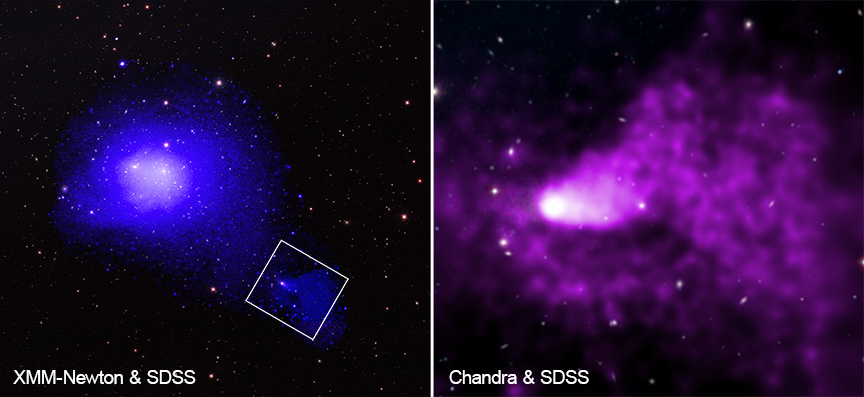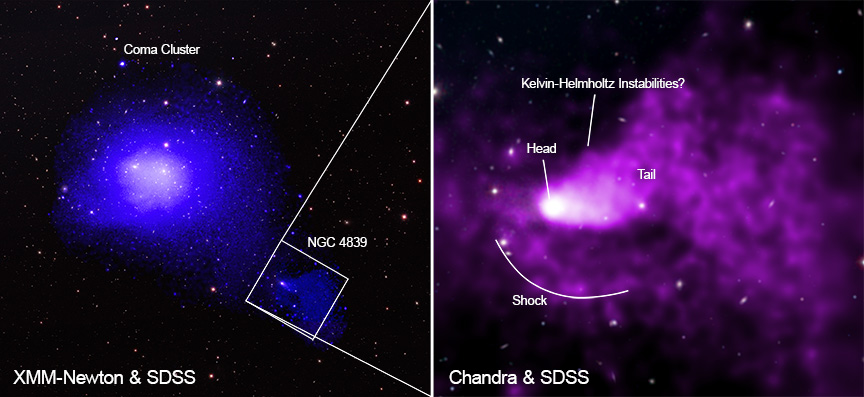NASA | MSFC | SAO | Chandra X-ray Observatory | 2023 Jun 06
A group of galaxies is plunging into the Coma galaxy cluster and leaving behind an enormous tail of superheated gas. Astronomers have confirmed this is the longest known tail behind a galaxy group and used it to gain a deeper understanding of how galaxy clusters – some of the largest structures in the universe – grow to their enormous sizes.Data: X-ray: Chandra (purple): NASA/SAO/Univ of Alabama/MS Mirakhor et al;
XMM (blue): ESA/XMM-Newton; Optical: SDSS (RGB); Image Processing: N Wolk
Astronomers trained NASA’s Chandra X-ray Observatory on the galaxy group NGC 4839. Galaxy groups are collections of about 50 galaxies or less that are bound together by gravity. Galaxy clusters are even larger and can contain hundreds or thousands of individual galaxies.
Both galaxy clusters and galaxy groups are enveloped by huge amounts of hot gas that are best studied using X-rays. These superheated pools of gas, though extremely thin and diffuse, represent a significant portion of the mass in galaxy groups or clusters and are crucial for understanding these systems. ...
A Deep Dive: Chandra Observations of the NGC 4839 Group
Falling into the Coma Cluster ~ MS Mirakhor, SA Walker, J Runge
- Monthly Notices of the RAS 522(2):2105 (June 2023) DOI: 10.1093/mnras/stad1088
- arXiv > astro-ph > arXiv:2304.05419 > 11 Apr 2023

